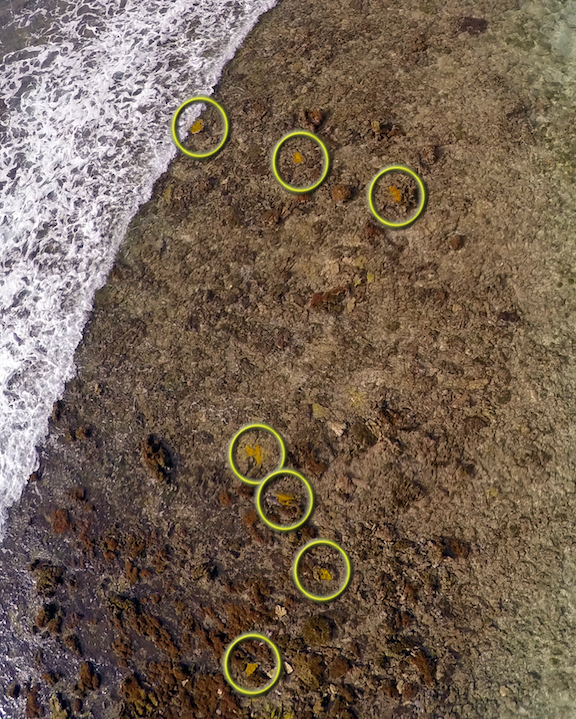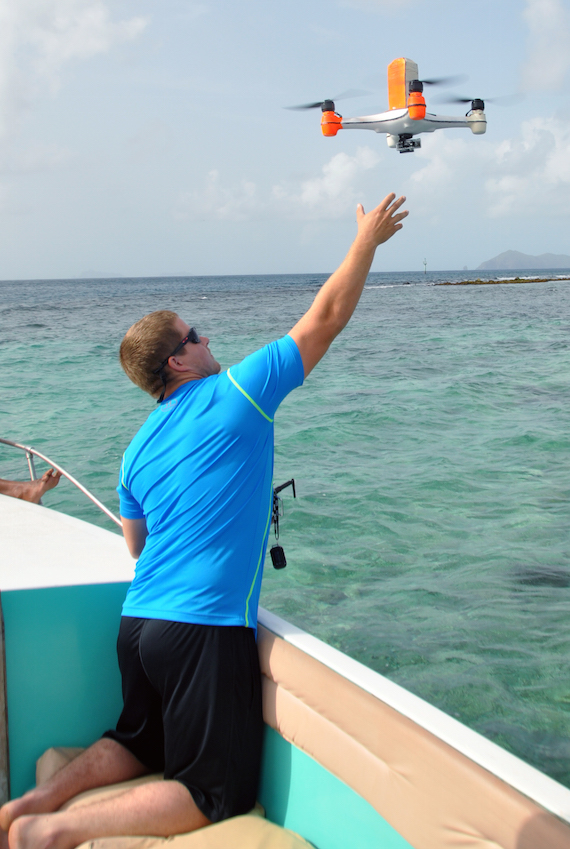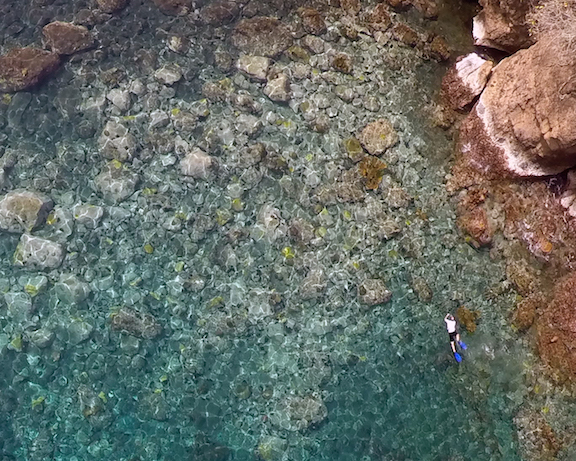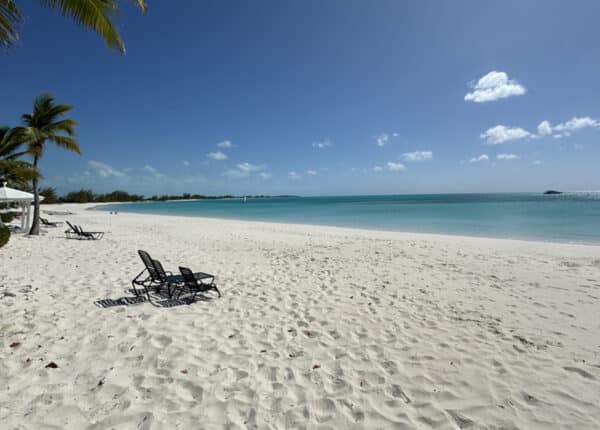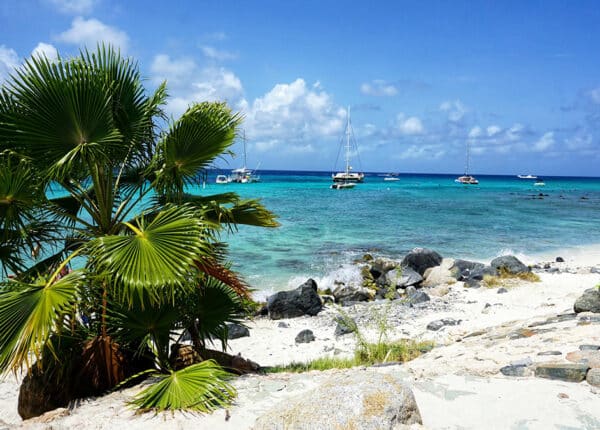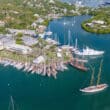How This Team Is Using Drones to Search for Hard-to-Find Caribbean Corals
Above: searching for coral from above (Photo: Jordan Mitchell/TNC)
By Dr Steve Schill
CJ Contributor
As I dove into the clear Caribbean waters, I adjusted my mask and started searching. I was on the hunt for signs of elkhorn coral, a rare reef-building coral that is often difficult to spot from a boat since it grows in shallow waters with high wave action. My team was on a two-week field assignment to survey coral reefs throughout St Vincent and the Grenadines in order to help the government identify important areas for marine protection.
Photo: Jordan Mitchell/TNC
In many areas of the Caribbean, expansive coral graveyards lie below the water’s surface – skeletons of a magnificent kingdom that used to exist. Elkhorn coral used to be one of the most abundant coral species in the Caribbean, and it’s especially important because it creates habitats for many sea creatures. Sadly, it is estimated that approximately 90-95% of these species have been lost over the past 40 years due to causes including hurricanes, coral disease and bleaching, climate change, coastal development, and overfishing. Scientists estimate that only one-sixth of original Caribbean corals remain and they may disappear within the next 20 years unless immediate actions are taken to protect them. That’s why it’s important to locate areas where corals are coming back and develop management plans that aid in their recovery.
Steve Schill/TNC
As I swam along the reef, I finally spotted what I was looking for. Large, antler-like branches of coral appeared in the distance in vivid colors ranging from yellowish-brown to orange – unmistakable when seen from above. That’s where drones come in handy. Satellite imagery does not provide sufficient detail to identify individual corals, but drones equipped with cameras provide images with the detail necessary to find and count elkhorn corals from above.
Photo: Jordan Mitchell/TNC
When I surfaced for air, I heard the familiar whirl of the quadcopter hovering above me, snapping pictures that we later use to count the corals. This custom-built amphibious quadcopter is an improved version of the one my Nature Conservancy colleagues and I have previously used in Haiti and Grenada. The new design includes stronger motors and a larger battery to increase fly time and stability in varying wind conditions. The quadcopter can be steered with a remote control or set in an autonomous mode via pre-programmed flight paths.
Coral populations have struggled in recent years. However, if you look hard, you can find remnants of hope – corals that are beginning to regenerate and recover. Drones are proving to be a useful tool in a conservationist’s toolbox as they help to monitor reef recovery and guide conservation actions.
As we returned from the field, we reflected on what we had seen and learned. Our team had collected hundreds of videos and images that will guide the establishment of new marine management areas within St Vincent and the Grenadines and other Caribbean countries. Drones are being used for a variety of new applications, but we may be the first scientists using them to count corals. As pioneers in a new drone world we can only hope these data will provide the information that will lead to a healthier future for Caribbean coral reefs.
Dr Steve Schill is a senior scientist with The Nature Conservancy’s team in the Caribbean working to develop methods, tools, and information products for countries seeking to identify high priority conservation areas based on biodiversity value and risk assessments.


